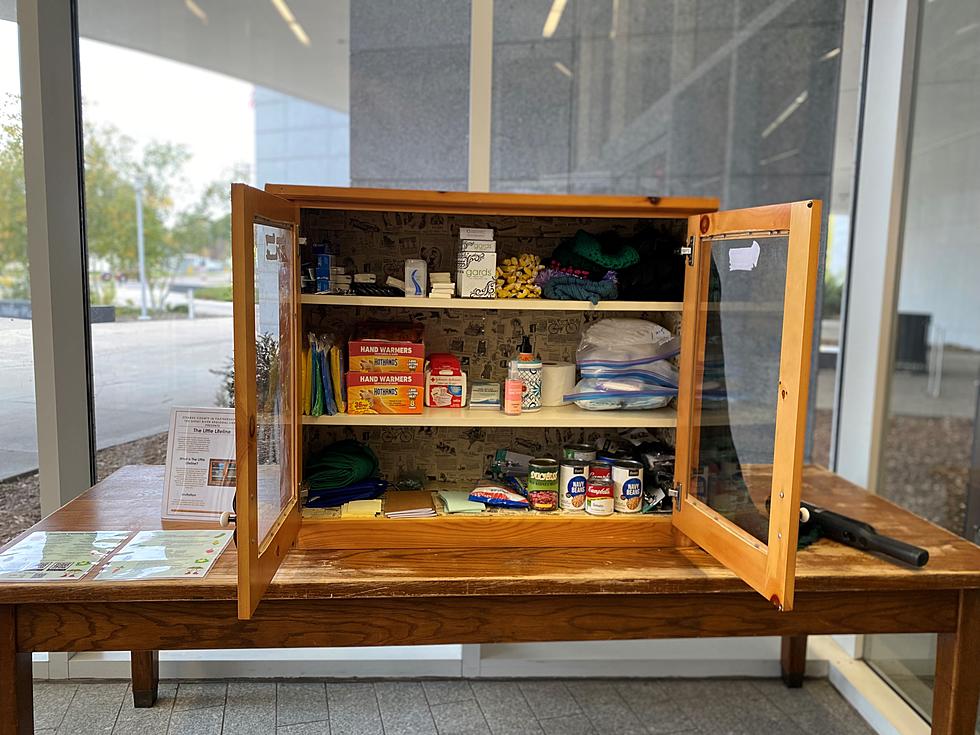
Meet “The Little Lifeline”- Immediate Support For Those Experiencing Homelessness
A NEW WAY TO SERVE
Stearns County, in partnership with The Great River Regional Library of St. Cloud, is inviting everyone in St. Cloud and our surrounding communities to participate in filling up The Little Lifeline, now located at the St. Cloud Great River Regional Library, just in time for the fall and winter season.

THE STIGMA AND WHAT WE CAN DO ABOUT IT
There is a certain stigma surrounding the homeless, and many people in need are embarrassed that they really need the help. The location in St. Cloud is a neutral location where individuals in need can feel safe in getting some much-needed items to get them through tough times, and it's an easy place for those of us who can give, to drop items off for our fellow community members experiencing these very difficult times.
'The Little Lifeline' is basically an idea based on the free little libraries you'll find all around central Minnesota, except instead of being filled with books, it is filled with items that people can come and take when they are in need, and a way for those of us who can, to bring items that can help them.
THE FIRST-EVER 'LITTLE LIFELINE'
The first-ever 'Little Lifeline' is located just inside the first set of doors at the St. Cloud Great River Regional Library. Things to bring would include non-perishable food items that would be easy to eat without utensils. Think about things like squeezy packets of applesauce, bars, etc. Other items like toiletries, cold weather items, and other items that people who have no home or possibly no money for food, could benefit from.

THE LITTLE LIFELINE
The Little Lifeline is on a large table just inside the entryway, so if you have larger items you would like to donate, such as boots, snow pants, coats, and blankets, Sweater, sweatshirts, scarves; you can use that space to set out the items.
Staff members of the Stearns County Human Services Values in Equity, Diversity, Inclusion, and Belongings Committee ask that you think about how these items might be useful. For example, if you are going to drop off food, it might be better to drop off granola bars, or foods that don't require silverware or a can opener. Try to think outside of the box, of what it would be like to have to live outdoors in our Minnesota Winters. Some things that people have thought of have been tents, blankets, granola bars, feminine pads, etc. Toothbrushes and paste, combs, brushes, hats, gloves, scarves, socks. What about hand and feet warmers? What else can you think of?
LISTEN TO THE INTERVIEW
You can listen to my interview with Kailyn Anderson and Bethany Berthiaume, part of the Stearns County Human Services Values in Equity, Diversity, Inclusion, and Belongings Committee, by clicking on the player below.
LETS MAKE THIS HAPPEN!
I ask that you put yourself in their situation. This is more than people choosing to be homeless. This can be a family that has lost their only parent, and now have nowhere to go. This is about kids who have to sleep outside at night, bundled up in one blanket with their siblings. I've talked to people who have gone through this in their life and remember it well. I hope that we can all come together, and be there for those who need us in their darkest times.
LOOK: The 25 least expensive states to live in
Gallery Credit: Aubrey Jane McClaine
LOOK: The most expensive weather and climate disasters in recent decades
Gallery Credit: KATELYN LEBOFF
LOOK: 50 Beloved Retail Chains That No Longer Exist
Gallery Credit: Madison Troyer




![Have You Seen All Of Minnesota’s License Plate Options? [GALLERY]](http://townsquare.media/site/150/files/2021/01/Image-of-pollinator-plate-2.jpg?w=980&q=75)